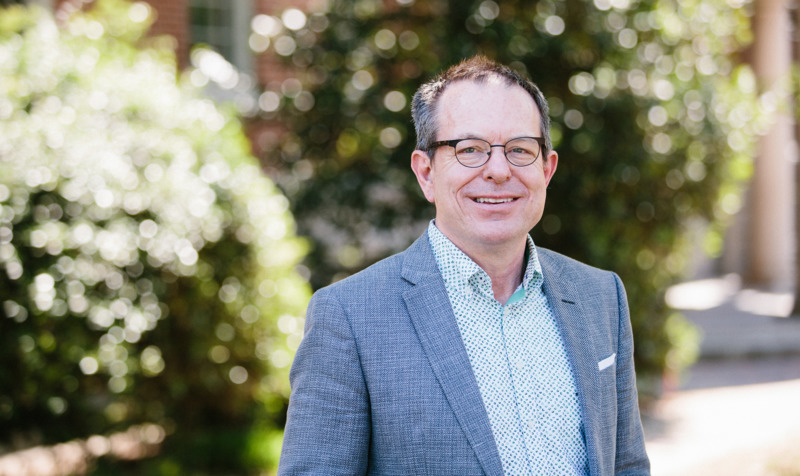Education
- Ph.D. 1994 – University of Chicago, Psychology
- M.A. 1992 – University of Chicago, Psychology
- S.B. 1982 – Massachusetts Institute of Technology, Computer Science
Areas of Expertise
- Creativity and innovation
- Learning sciences
- Dynamics of collaborating groups and teams
Background
Keith Sawyer has dedicated his career to the study of creativity and learning. Sawyer’s research focuses on improvisation group performance, including studies of jazz ensembles and Chicago improv theater groups. Sawyer’s interest in group creativity goes back to high school, when he first began to play jazz piano in improvisational groups. The most creative groups enter a state of group flow, and this became a central topic of Sawyer’s research—which groups are most creative? How do the members interact with each other, from moment to moment? How does a group create something that’s more than the sum of its parts? While in graduate school at the University of Chicago, Sawyer performed as the pianist with several improv theater groups, and spent several years studying staged improvisational theater.
Sawyer’s research applies rigorous qualitative methods to analyze the moment-to-moment interactional dynamics of these creative performing ensembles. His research has identified what all creative groups have in common—whether jazz, theater, or business teams. Sawyer has used these foundational understandings to provide advice in how to enhance creativity in business teams, student study groups, pair programming, and teacher professional development—for example, in his book Group Creativity: The Creative Power of Collaboration (2017).
Sawyer has applied his research findings to enhance classroom teaching. He shows that the most effective teachers use guided improvisation to support each student’s individual learning needs. For example, he has extended his findings from improvisational theater to provide practical classroom advice for teachers, in his new book The Creative Classroom: Innovative Teaching for 21st Century Learners.
Research
Sawyer uses qualitative and quantitative methods to examine the conversational dynamics of groups in real-world contexts – whether business meetings, classrooms, or informal learning environments. His research helps us answer questions such as: Which teams are more creative? What team processes result in greater creativity? Which groups are more likely to contribute to more effective learning of the participants? Which organizations and classrooms are most likely to foster effective group interactions?
Sawyer’s studies of jazz ensembles, improvisational theater groups, and children at play, led to his theory of collaborative emergence, as presented in his book Social Emergence: Societies as Complex Systems (2005). This foundational sociological theory helps us understand the relationships between individuals, groups, and societies.
In his current research, he is studying how teaching and learning are organized in professional schools of art and design, with the goal of identifying a core set of features that can be used to design more effective learning environments. He conducted ethnographic studies of the Savannah College of Art & Design, and of the Sam Fox School of Design and Visual Art at Washington University in St. Louis. This research has resulted in numerous peer-reviewed journal articles, and invitations to deliver scholarly presentations throughout the United States and Europe. He is currently working on a book based on this research titled Learning How to Create.
